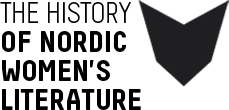On Danish Eighteenth-Century Periodicals and Libraries
Author: Peytz & Co
The eighteenth-century women dramatists cover a wide spectrum of styles. Both Anna Catharina von Passow and Birgitte Catharine Boye wrote pastorals, but they soon branched off in different directions. Boye devoted her pen to the heroic drama, and Passow began to experiment with the new form of comedy, which was the genre on which Charlotta Dorothea Biehl concentrated.While Boye’s stage art represents a high-flown conclusion to the eighteenth-century heroic drama, Passow and Biehl are of an earlier generation; they were innovative and made a major contribution to the continuation of the Danish public theatre in the period following Holberg’s death in 1754.
The Danish authors Charlotte Dorothea Biehl and Sophia Lovisa Charlotte Baden, along with a number of anonymous women, wrote prose that was both moralising and emotionally instructive. Biehl in her moral tales. Baden in her moral epistolary tales.Family issues and scheming love stories are key to a protracted plot, the mainspring of which is often a dispute concerning a contract of marriage. The major role models were Richardson, his French disciple Marmontel, and the German writer Gellert.
The Female Pattern in Folk Poetry and Folklore Collection
In earlier times the folktales known as “Narrationes Lubricae”, salacious stories, were narrated by adult informants in the rural areas of Norway, in the villages. There are many women registered among the adult informants. The crude stories were/are by no means the sole reserve of male company.We know the names of approximately two-thirds of those who narrated the comic erotic material, and of these exactly one half are women. This is perhaps surprising. Many consider the folktale and, one would have thought, the cruder type in particular, to be more of a male-centric form. We connect female informants primarily with ballads, in which music and aesthetics are in the foreground.
Even though much Nordic ballad tradition of the last four hundred and more years has been lost, the surviving tradition represents an overwhelming amount of source material. The intense registration and publication work undertaken during the last century and a half has resulted in an overview of the Nordic tradition.The extensive corpus of material on which these editions are based contains songs that were sung by and about women. From the host of female singers, collectors, and scribes, we will here select ballads dealing with women’s personal and fundamental experiences – experiences with critical bearing on family and lineage.
Christiane Koren’s travel diary from her journey to Copenhagen is a first-rate and personal story about the dawning of the new century in Denmark. With elegant, spirited, and eloquent prose, Koren shares her experiences with her friends and family. The eighteenth century was irrevocably over, and Koren’s description of life in Madam Møller’s boarding house and at Bakkehuset tells us about the new female role of muse and ‘poet mother’ within an intimate circle of young men and up-and-coming geniuses.
Norwegian Magdalene Sophie Buchholm’s urge to write must have been strong – and conflict-ridden. She actually produced numerous poems, many of which were published in journals and poetry anthologies during the 1780s. The majority, however, were collected in her Poesier (Poetic Writings) and published in Copenhagen in 1793. The collection was issued in the author’s full name – she obviously saw no need to conceal the fact that she was a woman.In terms of content and choice of genre, the writer was typical of her period. Her output included elegies, ballads, commemorative poems, an ode, and a héroïde, plus quite a few songs. The sensitive and elegiac poems make up the majority of her oeuvre.
In the eighteenth century the Swedish Countess Maria Gustava Gyllenstierna was characterised as “a woman of great talent and noble heritage, who has honoured her Country and her Sex in these our times.” She is considered to be one of the skilled literary women of the time; she is listed in contemporary catalogues of Lärda Swenska Fruentimmer (Learned Swedish Women) and she is described as such in the directory of Swedish nobility.She was the second wife of Privy Councillor Carl Bonde and bore him five children, all the while accompanying him on trips to, among other places, Finland and England. He died in 1699. Maria Gustava Gyllenstierna was a widow for nearly forty years, during which time she devoted herself to her writing at Tyresö Castle just outside Stockholm. Translations from German and French made up a large part of her literary output.
Queen Christina was the reigning queen of Sweden between 1644 and 1654. Her reign ended when she abdicated, after which she converted to Catholicism – an action which has greatly tasked historians in their attempts to offer an explanation. Her interest in cultural and scientific topics started at an early age, and she associated and corresponded with a number of the most eminent scholars of the era.Christina’s literary works consist of two collections of aphorisms, an autobiography, two essays – one on Alexander the Great and one on Julius Caesar – and her letters. The Queen did not publish these works during her lifetime. They were first published by Johan Arckenholtz in Mémoires concernant Christine, reine de Suède, pour servir d’éclaircissement à l’histoire de son regne et principalement de sa vie privée (1751-1760; Memoirs of Christina, Queen of Sweden, to Shed Light on Her Reign and Especially Her Private Life).Christina wrote in French, the language used by educated people of the day.

